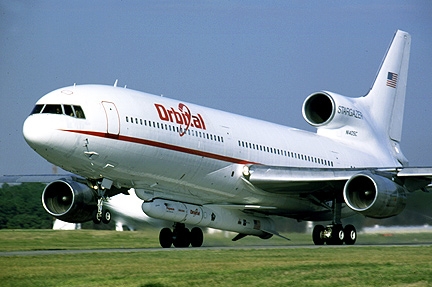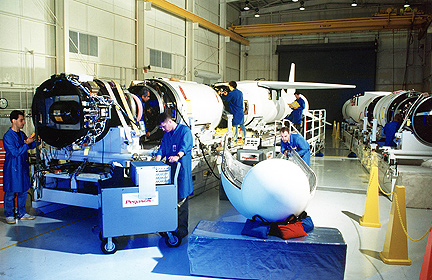Orbital Sciences... Blow 'Em Up Real Good (Missile)

Orbital L1011 with Pegasus, photo courtesy of Orbital Sciences.
Based on the
Pegasus space launch vehicle,
Orbital Sciences Corporation (NYSE: ORB) major new contract by the
U.S. Missile Defense Agency (
MDA) to supply this craft as Intermediate-Range Ballistic Missile (IRBM) target vehicles for use in future tests of missile defense systems. The seven-year contract, which covers development and production of as many as 22 target rockets and related systems over the 2011-2018 period, has a firm value of approximately $230 million for the first eight vehicles to be delivered by 2015, with up to $870 million in contract options for 14 additional vehicles, countermeasures equipment, modeling and simulation support, logistics activities and launch services to be provided from 2012 to 2018. The company's IRBM target is a multi-stage vehicle that will be air-launched from a standard C-17 cargo aircraft via a parachute extraction system, providing MDA with increased flexibility in testing its
Ballistic Missile Defense System (
BMDS).
 Orbital Science's Pegasus under construction. Photo courtesy of Orbital Sciences.
Orbital Science's Pegasus under construction. Photo courtesy of Orbital Sciences.
The original Pegasus technology has spawned numerous derivative launch vehicles that have supported U.S. Government and commercial satellite customers for over two decades. It was adapted to create the
Taurus and
Minotaur space launch vehicle programs, as well as the launch platform for NASA's
Hyper-X hypersonic research missions. In addition, significant flight-proven elements of Pegasus were incorporated into the company's
Orbital Boost Vehicle missile defense interceptor to reduce development timelines and assure high levels of reliability, the same attributes that will now be applied to the IRBM targets program. More than 150 Pegasus-derived space and suborbital launchers are expected to be produced over a 30-year period from 1988 to 2017.
Topical Tags :
Regional Tags :



